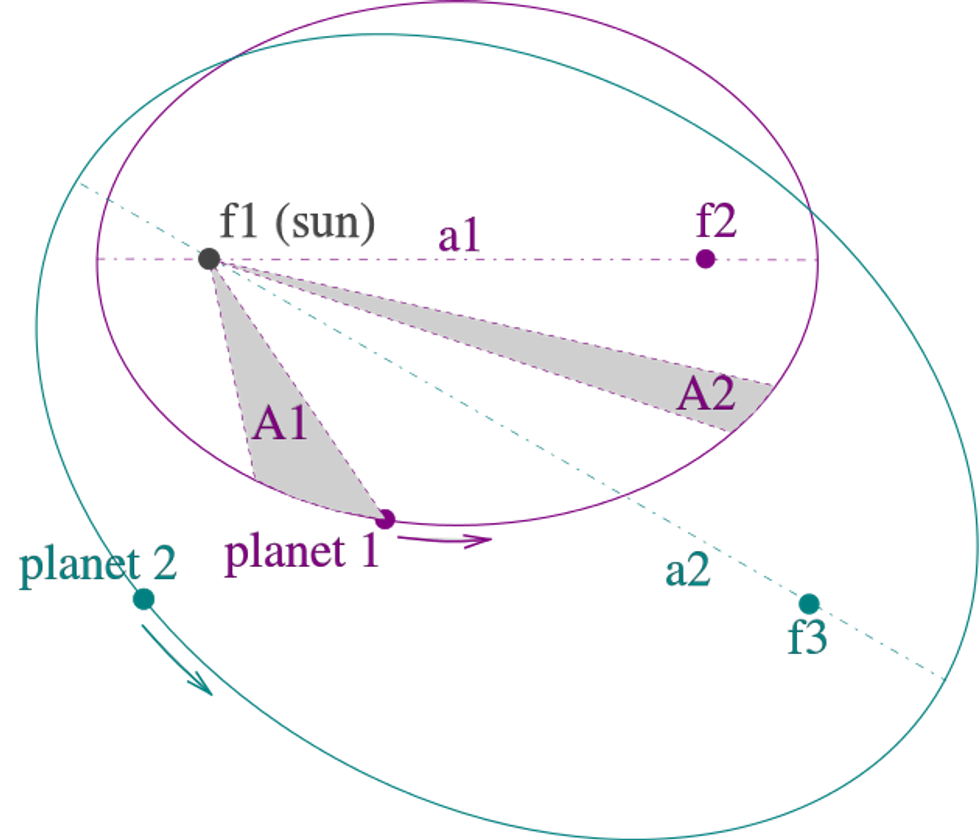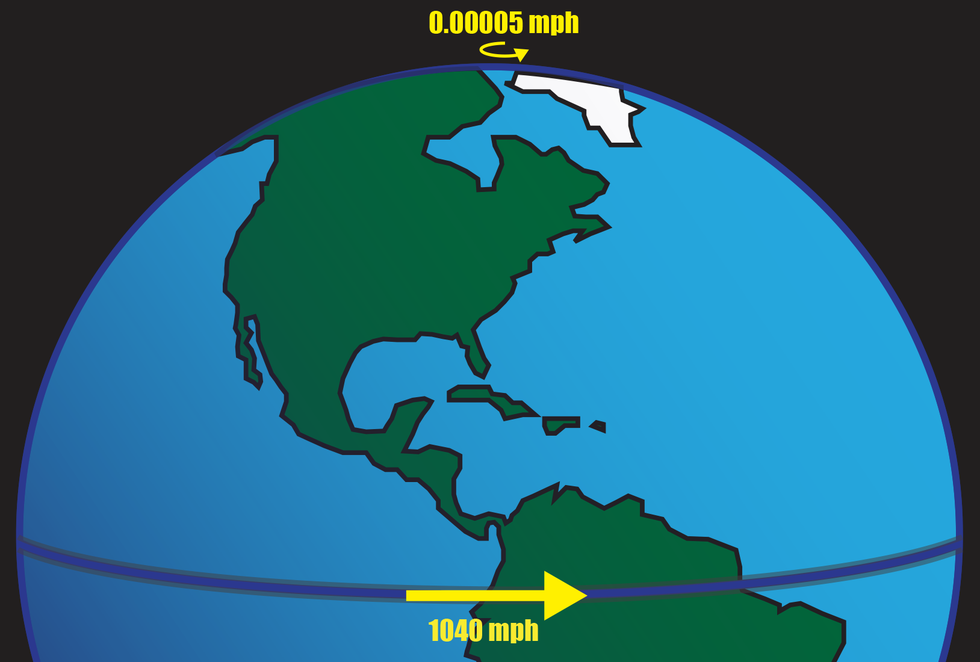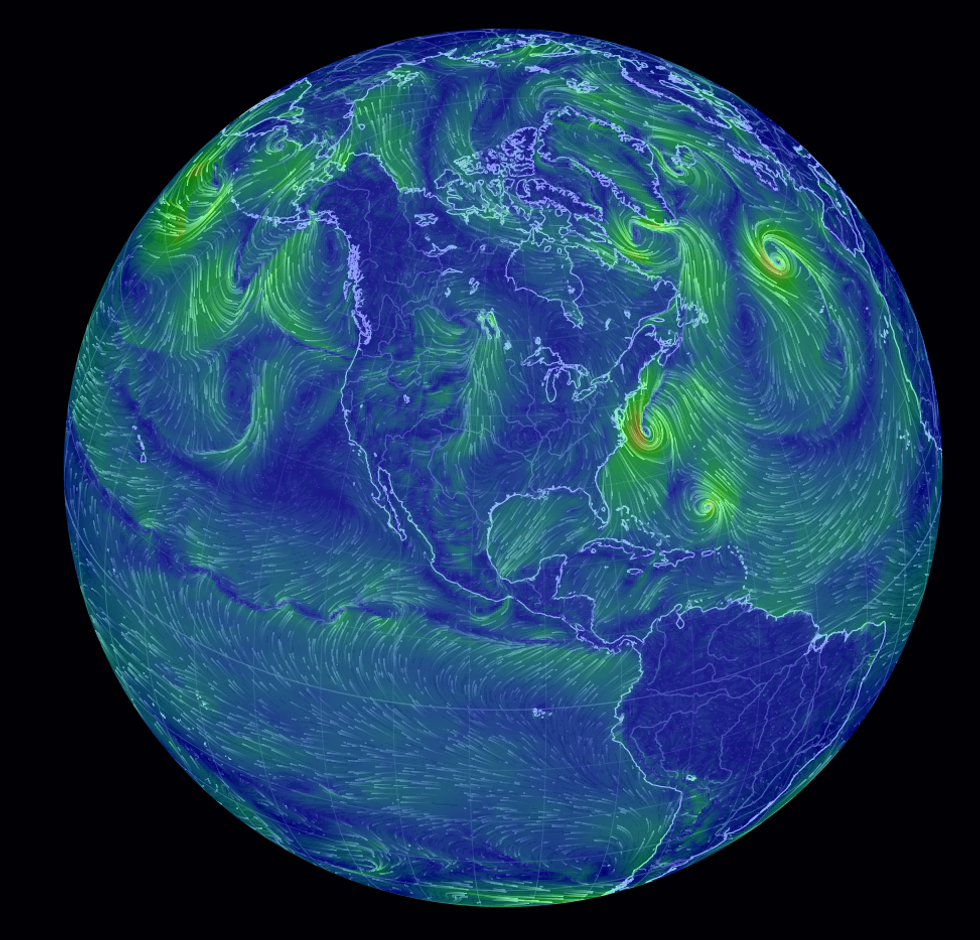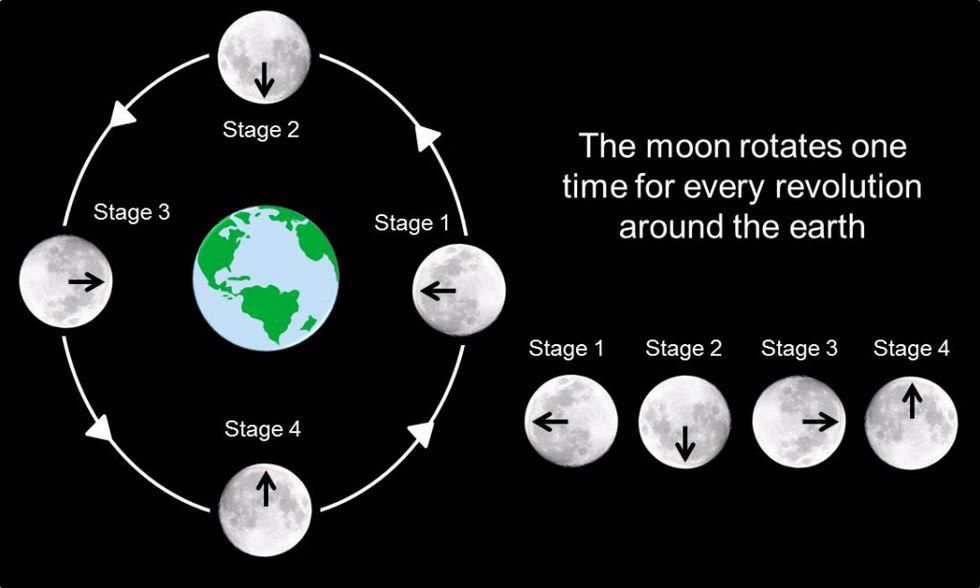Psalm 93:1
"...the world also is stablished [sic], that it cannot be moved.
Recommended for you
Psalm 104:5
"the Lord set the earth on its foundations; it can never be moved."
Ecclesiastes 1:5
"And the sun rises and sets and returns to its place."
~~~
It was a couple summers ago and I was with my friends in Ann Arbor, MI visiting Ann Arbor's annual street art fair. We came across a group of Anabaptists at a street corner. I wouldn't have noticed them had it not been for one them standing on a chair with a poster in one hand and a Bible in the other - both coned around his mouth to amplify his voice to the people walking by. If you ask my friends, they'll tell you that I'm a fairly unobservant person, but when a person is yelling Bible verses at you at the top of his lungs from a few feet away, it's hard to miss.
With a bit of convincing, I was able to get my friends to approach the people on the street corner with me. We avoided the man on the chair and talked with a woman who was sitting nearby. She was handing out material on the things that the man was shouting about. They identified themselves as being members of the Gateway Anabaptist Church. We chatted with them a bit to see what they believed, but didn't get into anything deep because there were other things to see and do. Once we got home, we looked at the material they had given us and we found their website. Upon investigation, we found that they believe that the earth is the center of the universe. In fact, they have a whole page of 281 biblical references to the earth being the center of the universe.
A (Really Quick And Majorly Abbreviated) History Of Cosmology
The idea that Earth is the center of the universe is called Geocentrism and it is an old concept. The idea stems from ancient Greek philosophy and astronomy. In 4 B.C. the ideas of Pythagoras that the earth was a sphere and of Anaximander that the earth is at the center of the universe and stationary had been combined and most educated Greeks believed that the earth was a sphere at the center of the universe. The details of this idea were expanded upon and given specifics by Claudius Ptolemaeus. His model of the cosmos is called the Ptolemaic model. The main observation supporting the idea of Geocentrism was that the shapes of the constellations weren't changing - There was no observable stellar parallax and so the Greeks didn't believe the stars to be so far away. They believed them to be of comparable size to the planets and stuck in the Firmament and made of aether. It wasn't until the 19th century that we gained the ability to measure the stellar parallax because you had to wait a half a year to measure the parallax and it was difficult to measure due to the precision needed.
In the years following the Ptolemaic model many astronomers challenged various pieces of the model - many of these challengers were Islamic. Al-Zarkali, for example, proposed that the orbits around the earth were not circular but rather elliptical in the 12th century - about 500 years before Kepler formalized his laws. The first real challenge to the geocentric model was from the publication of On the Revolutions of the Heavenly Spheres by Copernicus. He challenged the ideas, but didn't have a better predictive model. It took Galileo Galilei with the newly invented (1609) telescope to finally make a dent in the idea that the earth was the center of the universe. Galileo proposed that the sun was the center of the universe and was eventually persecuted by the Catholic Church for advocating the idea so strongly. The Catholic Church sentenced him to house arrest from 1633 until his death in 1642. Under house arrest, he continued to produce various works that furthered our understanding of kinematics and the materials science.
Some of Galileo's findings were that Jupiter had moons that rotated around it and so some celestial objects did not rotate around the earth. This also confirmed that a secondary celestial body could orbit a moving celestial body, strengthening the heliocentric argument that a moving Earth could retain the Moon. He also observed that Venus showed all the cycles - just like the moon - and that it got smaller and larger. This wouldn't happen if Venus was circling around the earth between the earth and the sun (which was also believed to be circling the earth) and it wouldn't happen if the sun was in between the earth and Venus. The answer had to be that Venus was sometimes between the earth and the sun and at other times the sun was in between Venus and the earth. All of that means that Venus doesn't circle Earth, but instead circles the sun.
The final blow came with Kepler's laws of planetary motion based on Tycho Brahe's observations. The mechanism by which the planets moved in the elliptical paths was proved by Isaac Newton when he described gravity in 1687. The real nail in the coffin for Geocentrism was the observation of stellar parallax of star 61 Cygni in 1838 by astronomer Friedrich Wilhelm Bessel. Until then, stellar parallax was thought to not exist.
Advanced Geocentricity
The Gateway Anabaptists have come up with a new and improved version of Geocentricity. They call it Advanced Geocentricity. It turns out that the Gateway Anabaptists are biblical literalists - they take the Bible at face value to be literal truth. Their logic is "... [if one really is a true Biblicist] every word is truth, or the writer did not mean truth..."
They believe that the idea of Heliocentrism was perpetrated by the devil (perhaps through original sin, or directly). They state in their website, "The origin of Heliocentrism, (the idea of the earth spinning and traveling around the Sun) was Satan in the Garden of Eden placing doubt in her mind by asking Eve 'Yea, hath God said?'"
They believe that Heliocentrism contradicts the bible and so Heliocentrism cannot be true.
"In the astronomical case, it was the very doctrine, as doctrine, independently of consequences, which was the corpus delicti (the body of the offense): and this because it contradicted the Bible. And so it did; for the stability of the earth is as clearly assumed from one end of the Old Testament to the other, the solidity of iron." Emphasis theirs.
They claim that Geocentric theories are true because the bible says they are. "Geocentricity is correct because the Bible teaches it, and it is correct because, by God’s goodness, theory and observations support it." Emphasis theirs.
They credit Copernicus to be the main arbiter in pushing forward the idea of Heliocentrism. However, as we learned from the brief and majorly abbreviated history, although Copernicus was instrumental in furthering the ideas of Heliocentrism, there were other major key players and events that occurred to cement the idea that Heliocentrism was the more correct view. It took not only Copernicus, but also Galileo, Kepler, and countless others to make this scientific paradigm shift happen. All of the events took place over nearly two thousand years.
Although they are correct when they say, "There was no distinguishing data in Copernicus’ time..." because the data to prove some of Copnernius's theories didn't exist until Galileo with his telescope and others with their more advanced machinery provided the data, they are incorrect to go on to say that, "...and there is no distinguishing data in our time." There is data that distinguishes in our time. The stellar parallax of of star 61 Cygni is just one example.
They believe that, "That which distinguishes is the Bible, and the Bible distinguishes for geocentricity." Not everybody holds this to be true. I could go out on a limb and say that a majority of very devout Christians believe that Geocentrism isn't true. It is dangerous thinking like this that allows people to deny what is observable. It allows stagnation in scientific inquiry and human advancement.
They believe that people accept the theories of Heliocentrism over Geocentrism because Copernicus was an authority and that we trust the authority of Copernicus over the authority of God.
"Copernicus’ greatest and most appealing argument was (and still is) the argument of authority by education. “Bow the knee” to education and parrot the cosmological principal of centrism. Copernicus, in his writings, like present day correctors of the KJV 1611, claims he is right because he is so smart that he must be right!" Emphasis theirs.
But they fail to see the link between why Heliocentrism is taught now and why Copernicus and many others fought so hard to have it taught as the correct theory and to have it taught to students. People don't just adopt the next idea that comes about because they want to disprove the Bible or to remove the authority of the scripture. It took humanity from 4 B.C. all the way until the 19th century for the theories of Heliocentrism to be proved and widely accepted. That is about 2000 years. It didn't just happen overnight when Copernicus declared that the Sun is at the center of the Solar System - to think so erases all of the hard work and sacrifices that humanity has made to sharpen their knowledge of the natural world.
Although I am not a Christian, from what I understand of the Christian god, He would like us to better understand our world around us. By using our scientific knowledge and the scientific method to better understand what He created, we are coming ever closer to God. We better understand Him and His creation so that we can have an ever better relationship with Him. But I may be wrong. Perhaps to be closer to God, we are to deny the gifts of critical thought that He gave us.
Clouds
Beyond just using the scripture as support for Geocentrism, they note that Geocentrism is observable. They note that one can look at the clouds movement to see what they mean.
"We are told the sun just appears to be moving, but in actuality the sun is stationary in space at the center of our solar system. The public school (fool) system tells us the sun appears to move because the earth is spinning from West to East, thus causing the sun to only appear to travel East to West. However, if this were true, inertia would cause the clouds by necessity to move from East to West also. The clouds and vapors from the ground would be losing particles to the air like smoke trailing from the exhaust of a jet airplane. Smoke never precedes an airplane, so how can the trailing clouds of the earth supercede the speed of the ground beneath it? But the clouds do not move so. In fact, the clouds here in Michigan, move primarily just the opposite of the earth’s West to East movement! How can the earth be spinning one way and the clouds travel the opposite direction from which the earth is suppose to spin?! Occasionally, we even get a “Nor-Easter” wind, because the earth is not spinning!" Emphasis theirs.
It is ironic, in a way, that they use cloud movement to prove that the earth is stationary. Cloud movement is more complicated than just the rotation of the earth. The irony comes from the fact that wind circulates in different directions depending upon which hemisphere you are in. Tornadoes in the Northern hemisphere, for example, almost always spin in the counter-clockwise direction. It is the opposite for tornadoes in the Southern Hemisphere. The reason is due to what is called the Coriolis Effect. This effect only occurs if our planet is rotating.
"It takes the Earth 24 hours to rotate one time. If you are standing a foot to the right of the North or South Pole, that means it would take 24 hours to move in a circle that is about six feet in circumference. That’s about 0.00005 miles per hour.
Hop on down to the equator, though, and things are different. It still takes the Earth the same 24 hours to make a rotation, but this time, we are traveling the entire circumference of the planet, which is about 25,000 miles long. That means you are traveling almost 1040 miles per hour just by standing there."
So since things closer to the equator move faster than things closer to the pole, it messes with the way the air currents flow. This very awesome website shows you the air currents of the entire planet in 3-D and in real time. A snapshot is below:
Generally the air currents look like this:
So it makes sense that the clouds in Michigan flow from East to West even though the planet spins from West to East. Clouds end up being one of the bigger reasons that we know the Earth spins!
The Moon
They also mention the moon. They state:
"It is also interesting to note that the moon does not spin in space. From earth no one has ever looked up and saw the backside of the moon. Why isn’t the moon also spinning on its axis, especially if it evolved from the earth in the cosmic evolution of the big bang? So, once again, we see that the earth also could quite easily not be spinning as supposed."
After talking with a couple people, this logic seemed to make sense to them. You only see one side of the moon, so the moon doesn't spin, right? Wrong. The only way we could see one side of the moon is if it spins.
You see, if the moon didn't spin on its axis, then by the time the moon in Stage 1 got to Stage 3, the arrow would still be pointing the same way and the back side of the moon would be facing the Earth. However, if the moon does spin, then the front of the moon (indicated by the arrow) is always facing the Earth.
This quick but thorough Youtube video explains why the moon rotates once on its axis for every one rotation around the Earth. Basically, the moon is thought to have formed via a collision from a large asteroid during Earth's formation. The Earth and the (now) moon began orbiting and the gravity from Earth made the moon a little bit oval shaped. One of the elongated ends was pulled to face the Earth via gravity and so its rotation was altered to match one rotation about its axis for every rotation about the earth.
The Earth Is Not The Center Of The Universe
The Earth is an elliptical path around the sun and the sun is not at the center of the universe. This is the well supported theory of Heliocentrism. However, never believe an idea to be true based on authority alone. I urge you to go and look this material up yourself. Be a true skeptic!
The Gateway Anabaptists have very interesting views about the cosmos, and I never got a chance to go back and debate with them after I learned more about them. I would love to talk with them about their views of the cosmos and see what they would say about some of the evidence I have provided above. Who knows though, perhaps one day I'll run into them again at some other art fair. Maybe you will too. Except this time, both of us will be better equipped to have a discussion with them about their beliefs.
~~~
As always, stay skeptical my friends!




























